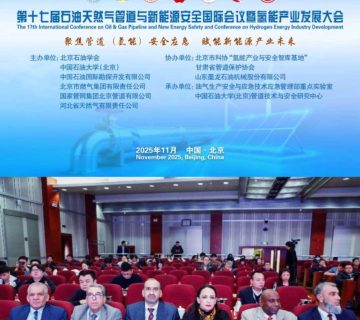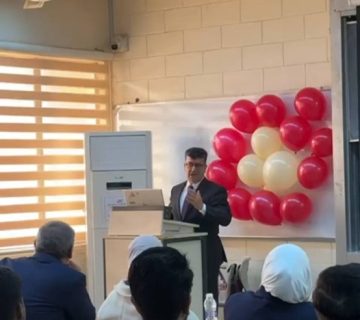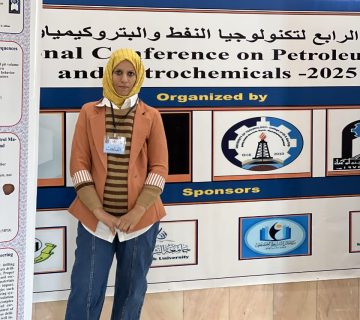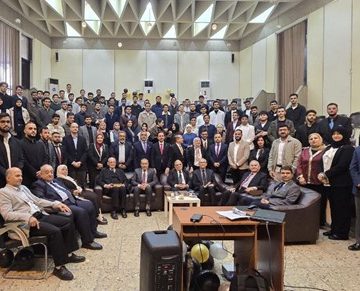Environmental Engineering Department at the College of Engineering, University of Baghdad, held PhD dissertation examination on Wednesday 25\9\2023 titled:
Merging Microbial Electrochemical System with Electrocoagulation Pretreatment for Achieving Dairy Wastewater Treatment “
By the student Ali Wahab Ahmed and supervised by Prof. Dr Mohaned Jasim Mohammed Ridha and Prof. Dr Mohammed Abd Atiyah Alsaraj. The examination committee consisted of Prof. Dr. Ahmed Abd Mohammed as Chairman, and the membership of Prof. Dr. Zainab Bahaa Mohammed, Assist. Prof. Dr. Hayder Mohammed Abdulhameeed, Assist. Prof. Dr. Hussein Majeed Flayeh, and Assist. Prof. Dr. Ziad Tariq Ahmed. After conducting the public discussion and listening to the student’s defense, the dissertation was accepted. It was summarized as follows:
The demand for dairy products was increasing proportionally with population growth. This increasing was led to produce many kinds of products and pollutants. Many studies were tried to achieve a sound method for treating dairy wastewater. It agreed that these methods should be have the ability to deal with high loads of organic matter, nitrogen, and phosphorous. This study is focusing on treating real dairy wastewater -especially removing chemical oxygen demand, phosphorous and nitrogen- resulted from industries through two processes, electrocoagulation and microbial electrochemical processes. The first process was examined five parameters to achieve optimum removal efficiency. Distance between electrodes, contact time, NaCl addition, initial COD concentration and current density. The best conditions achieved were 1 cm, 60 min, 250 mg/L, 5775 mg/L and 8.077 mA/cm2 respectively. The removal efficiencies for COD, P and N were 73.4%, 98% and 81.25% respectively. In the second process, three parameters were optimized, by using Lactobacillus plantarum as a microorganism, detention time, potential difference and initial COD concentration. The best achieved conditions were 17 days as detention time, 400 mV as potential difference between electrodes and 2000-17000 mg/L as initial COD concentration. The optimal removal efficiencies for COD, P and N were 97.4%, 99% and 99% respectively . The study also performed the semi batch mode for the two processes. At the optimum conditions for the two treatments, the removal efficiency for COD was 98.77%. While, the concentrations for P and N were nil. The results for the treatments were agreed with applicable Iraqi legislations.








